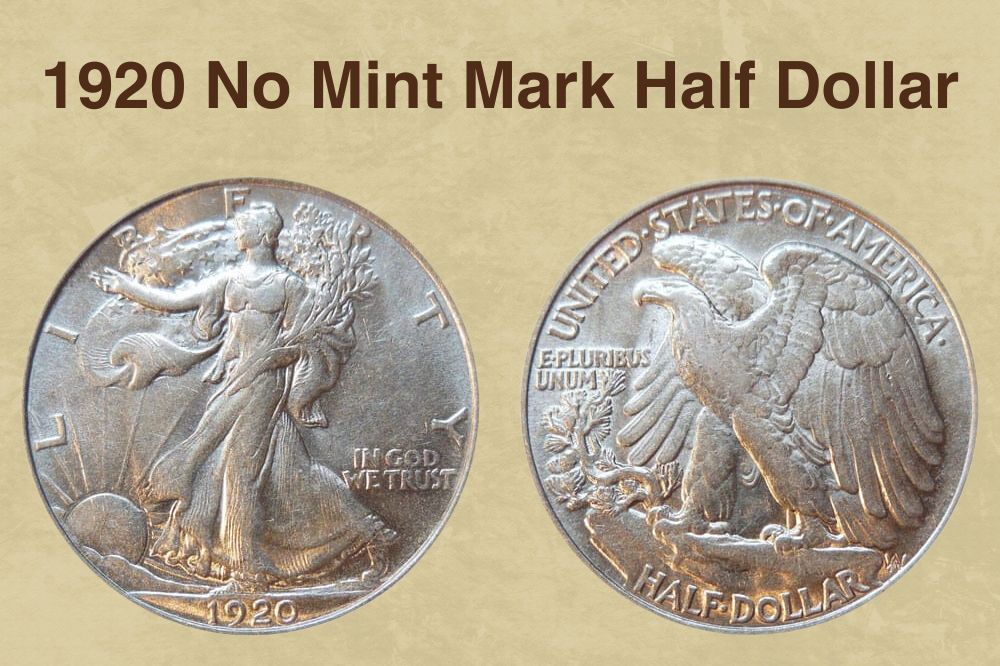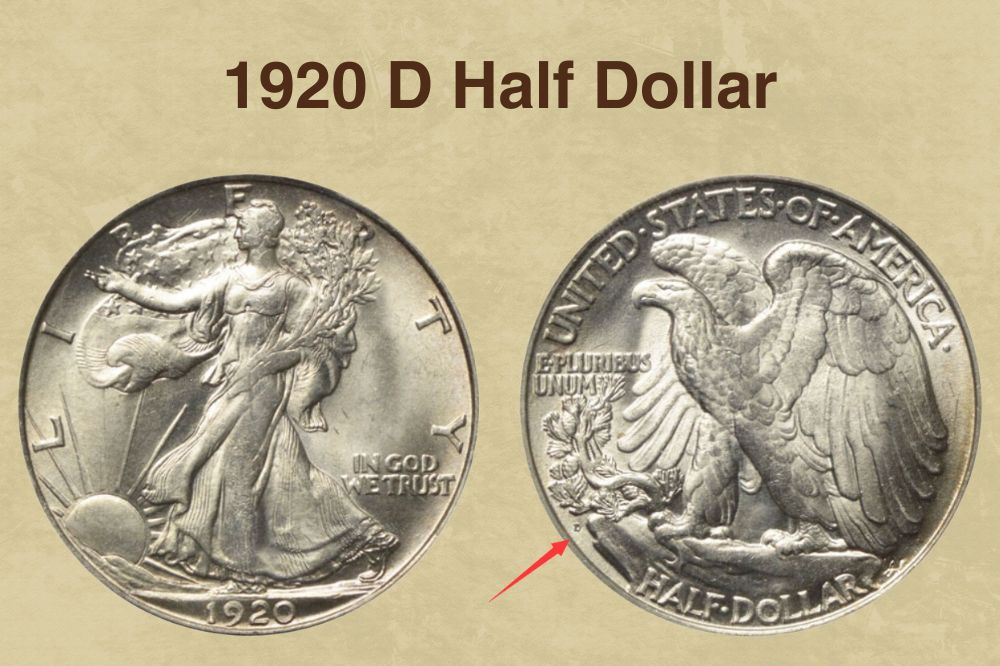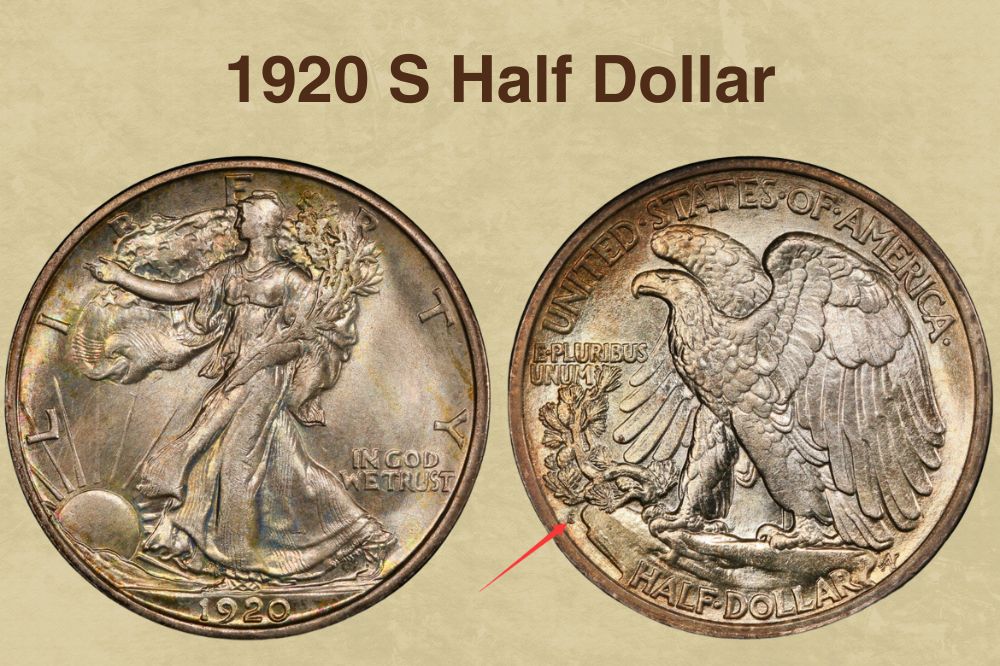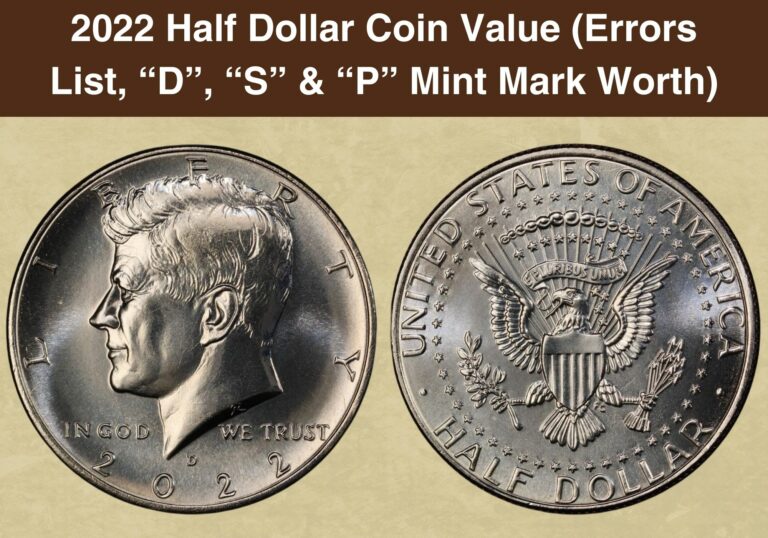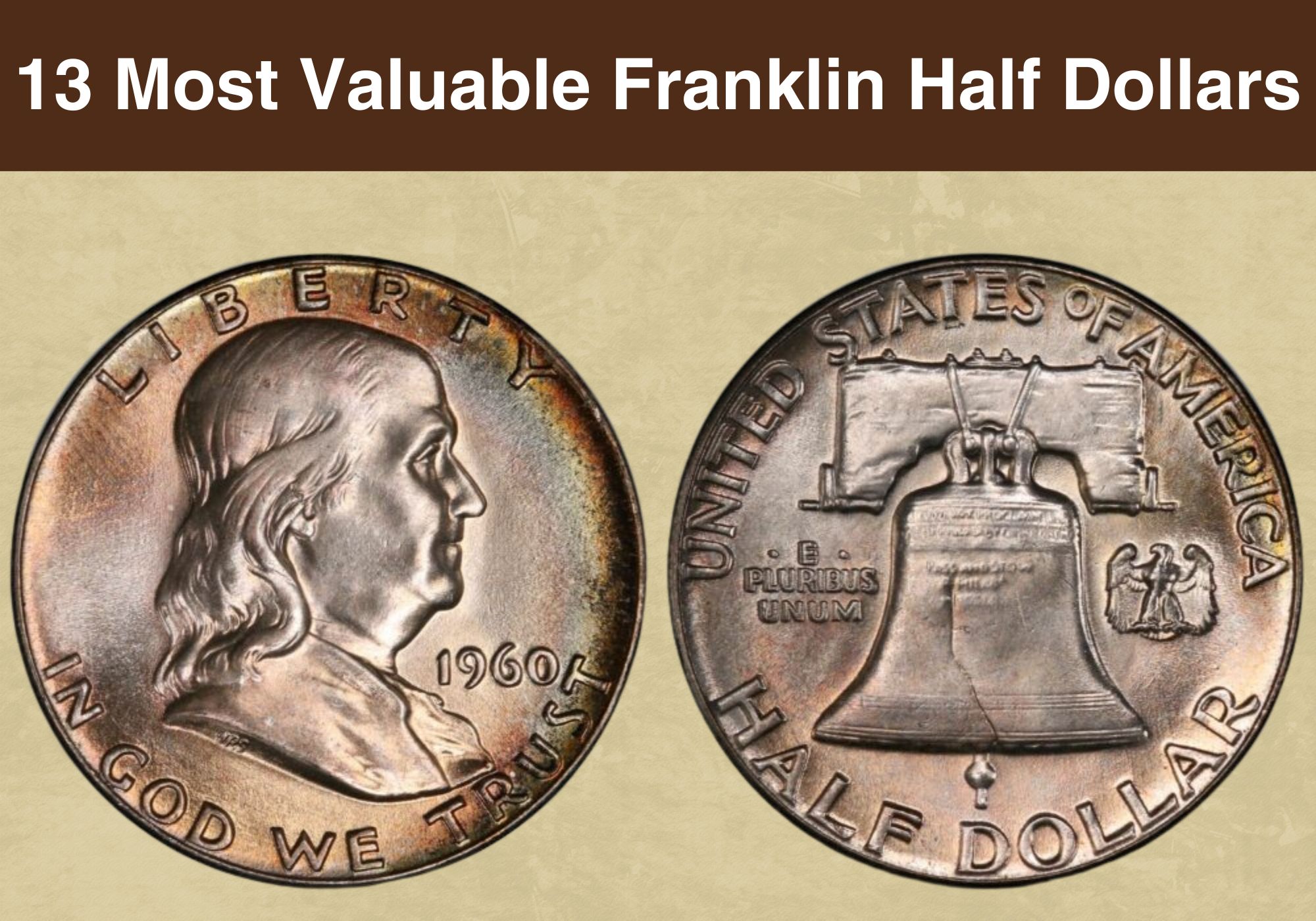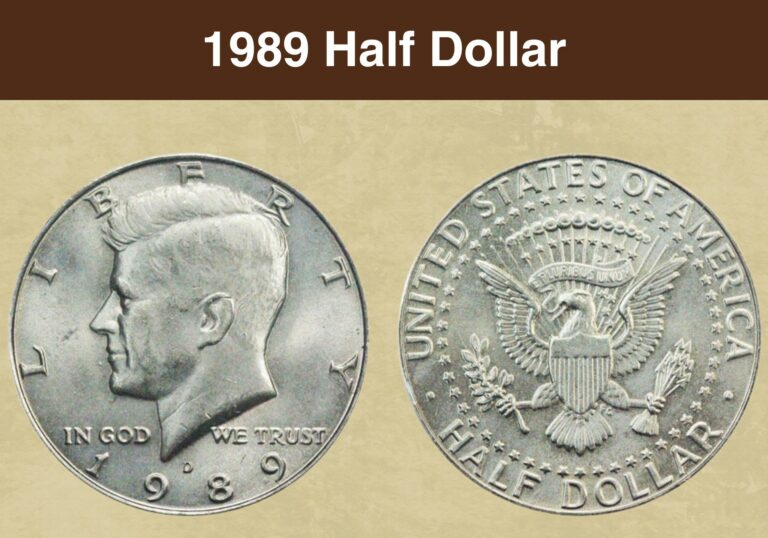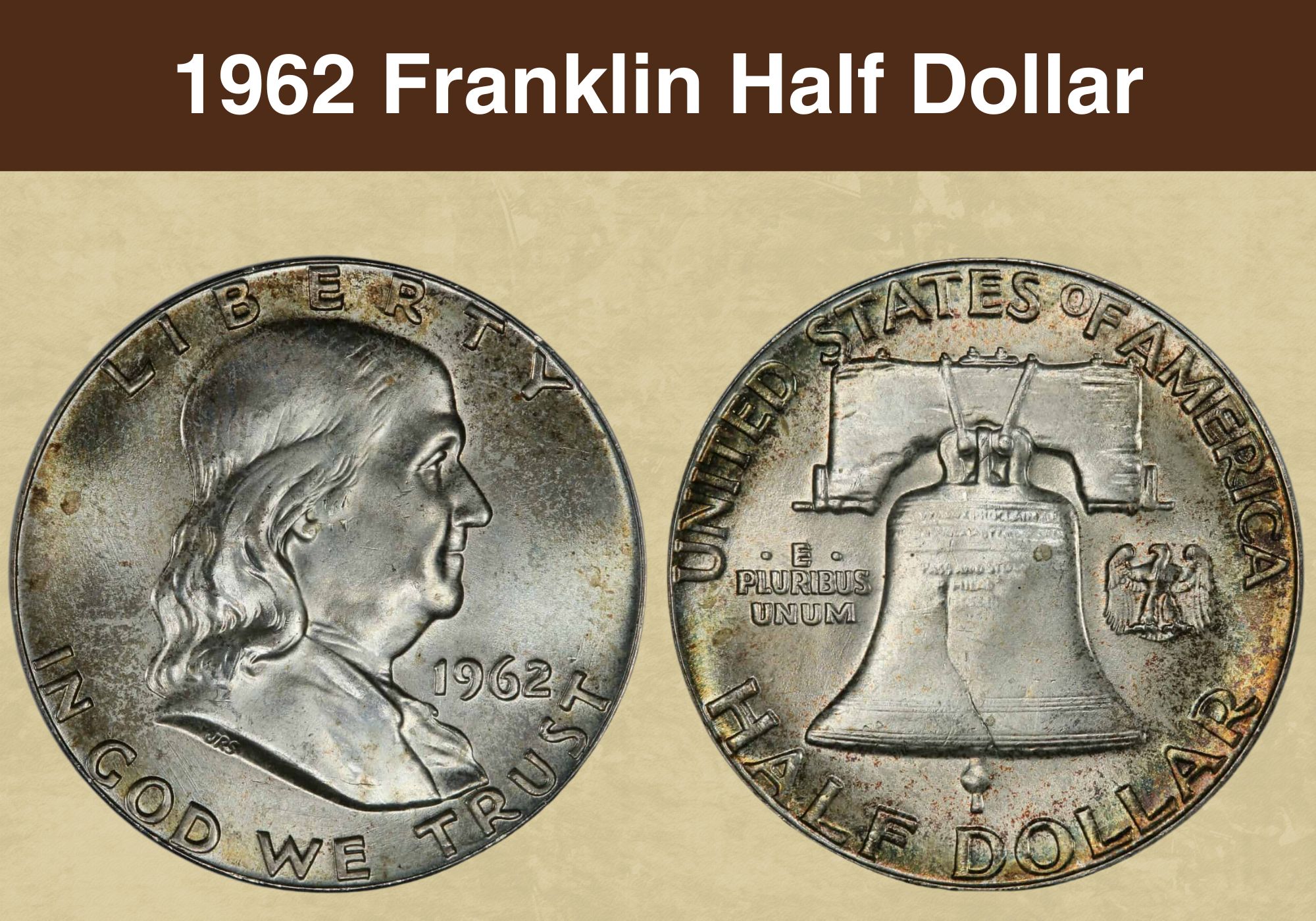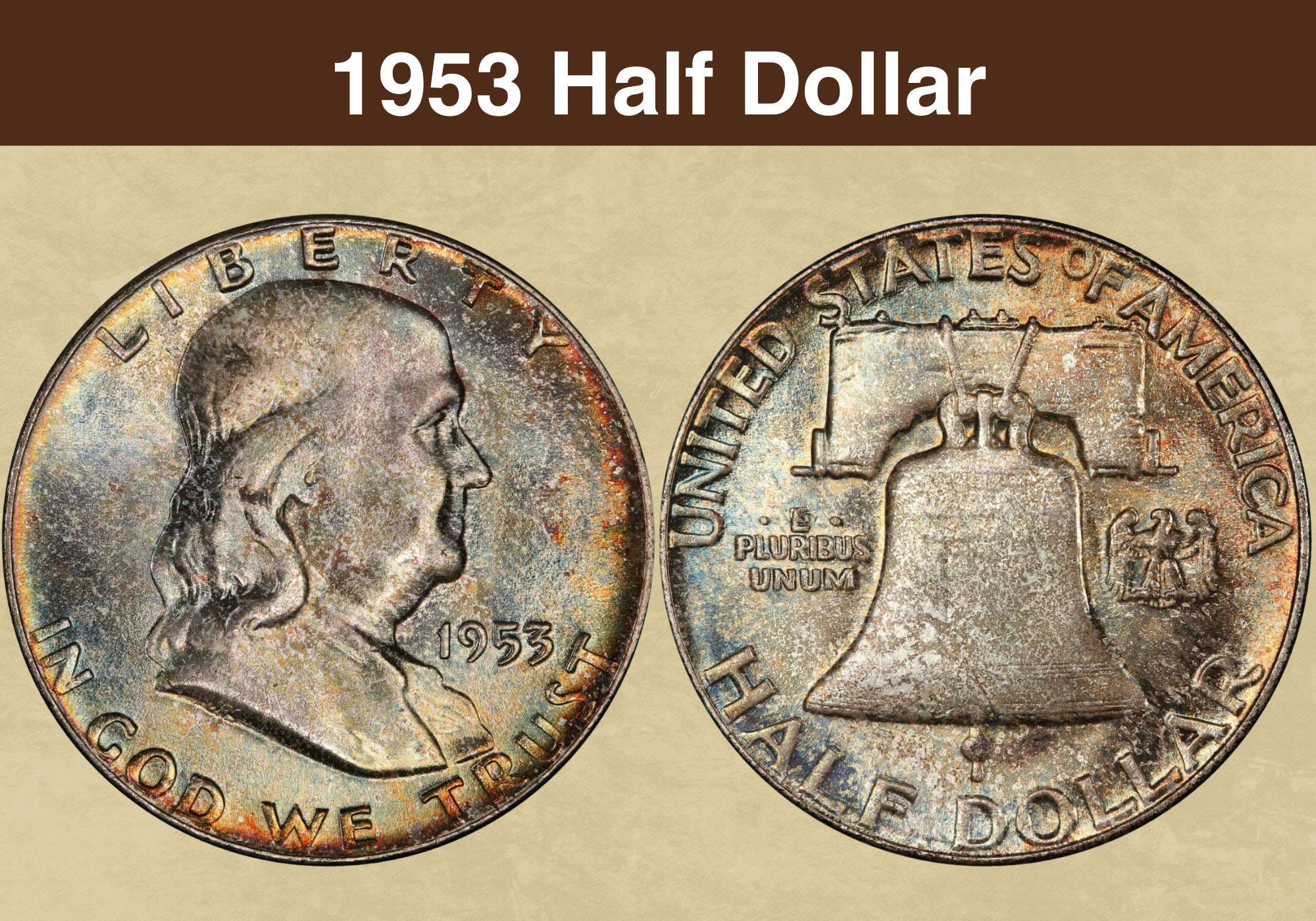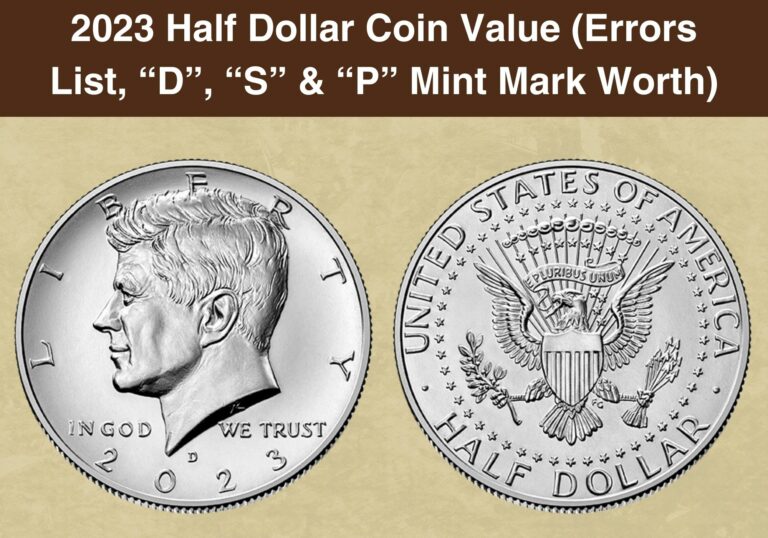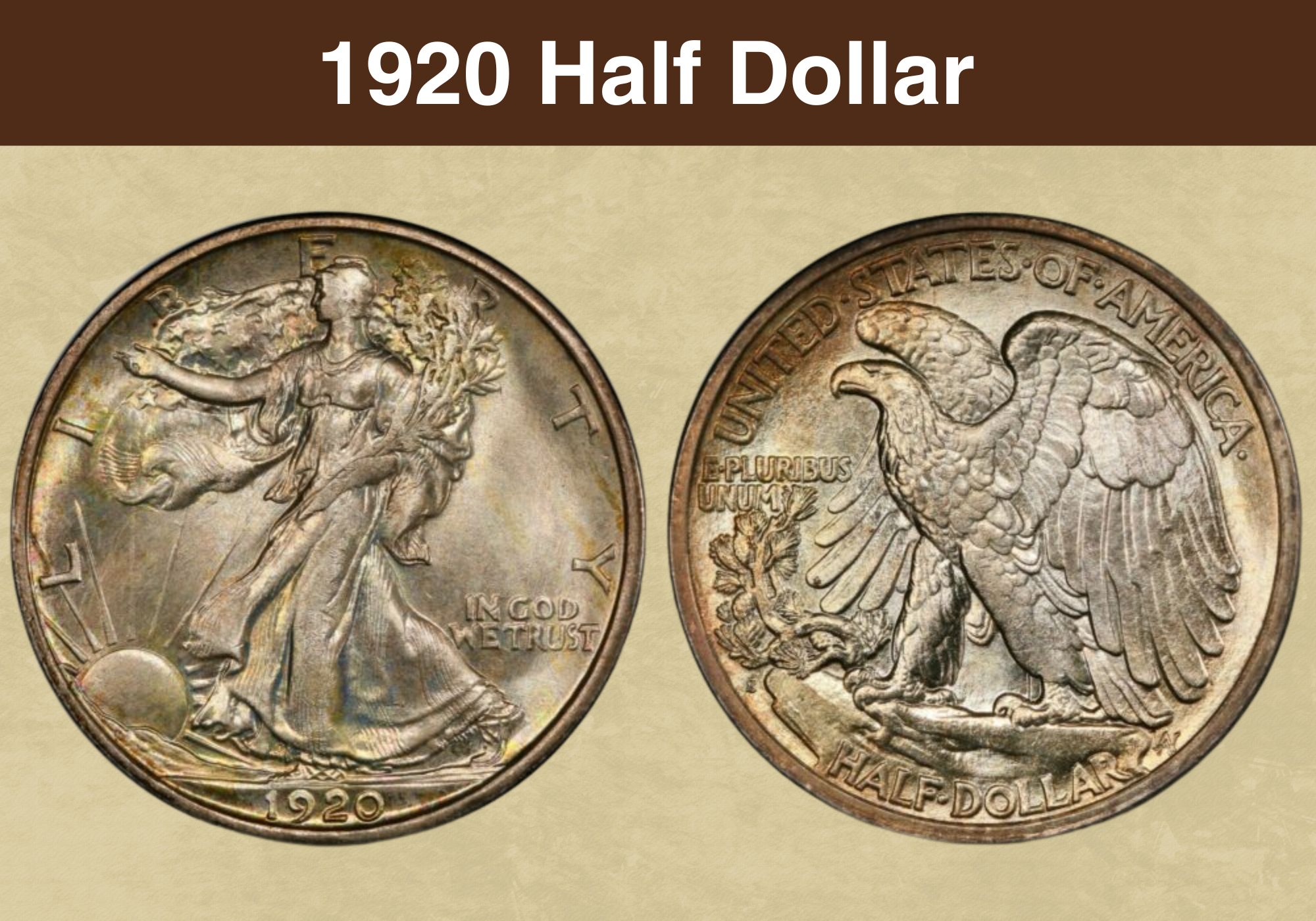
Coin Value Contents Table
Walking Liberty half dollars—also fondly called “Walkers” by coin collectors—have always had tremendous appeal to numismatists. Though they’re large, heavy, and often weakly struck, collectors and hobbyists alike still clamor to get their hands on any of these silver halves.
Just like any Walking Liberty coin, the 1920 half dollar issue is highly sought-after today. Because of its high silver fineness and low mintage, it’s a coin that any collector would be lucky to have. The high 1920 half dollar value in modern times makes it even more attractive.
Do you have a 1920 half dollar, and are you wondering how much it’s worth today? We’ve got you. Keep reading to learn more about this elusive coin series and how high its value has appreciated over the years.
1920 Half Dollar Value Chart |
|||||
| Mint Mark | Extremely Fine | AU58 About Uncirculated | MS62 Uncirculated | MS64 Choice Uncirculated | MS66 Gem Uncirculated |
| 1920 No Mint Mark Half Dollar Value | $175 | $625 | $900 | $1,575 | $17,750 |
| 1920 “D” Half Dollar Value | $1,000 | $3,500 | $4,750 | $10,000 | $65,000 |
| 1920 “S” Half Dollar Value | $450 | $1,700 | $2,500 | $6,000 | $47,500 |
1920 Half Dollar Grading
As with all coins, the higher the grade of your 1920 half dollar’s condition, the more valuable it is. Mint-state, uncirculated coins are the crème de la crème of half dollars and will be worth more today.
Here are some signs to help you assess whether your 1920 is in circulated or uncirculated condition:
Circulated:
- Intricate details of the design, like Liberty’s skirt and breasts, are flat and smooth
- The letters and numbers on the coin are difficult to discern
- The eagle’s wings on the reverse aren’t so defined or detailed
Uncirculated:
- Little to no trace of wear except for a couple of contact marks
- Attractive shine and luster when put under direct light
- High points of the design have not been flattened from wear
- The letters and numbers on the coin are somewhat sharp and very much readable
Still an amateur at grading your 1920 half dollars? Check out this easy-to-follow guide on how to assess and grade the Walking Liberty halves to find out how much your coin is worth today:
| # | Grade |
|---|---|
| 1 | Basal State-1 |
| 2 | Fair |
| 3 | Very Fair |
| 4, 5, 6 | Good |
| 7, 8, 10 | Very Good |
| 12, 15 | Fine |
| 20, 30 | Very Fine |
| 40 | Extremely Fine |
| 50 | About Uncirculated |
| 60 | Mint State |
| 65 | Mint State |
| 70 | Mint State |
Please check our grading guides to know your coin scale, It’s the necessary step to know the exact value of your coin.
Check out now: How to Grade Walking Liberty Half Dollar?
1920 No Mint Mark Half Dollar Value
The Walking Liberty half dollar was first produced in 1916. It was the result of a design competition the year before when Mint Director Robert Woolley asked three popular sculptors to create coin designs to replace the Barber dimes, quarters, and halves.
The renowned German sculptor Adolph Weinman ended up being awarded two of the coins. The first was the Mercury dime, another iconic and poetic coin. The second was what would later be known as the Walking Liberty half dollar.
The half dollar’s obverse shows a full-length image of Lady Liberty walking to the left, facing the dawn of day. Her left arm is outstretched, while her right grasps laurel and oak branches to symbolize peace and military strength.
On the obverse’s upper rim, the word “LIBERTY” is engraved, and on the bottom rim, you’ll see the mintage year. To the right of Lady Liberty’s skirt is the motto “In God We Trust.”
The coin’s reverse is just as astounding and creative. It shows an American eagle sitting on a mountaintop. It has its wings spread wide in a powerful pose. Out of the mountain, a mountain pine sapling is beginning to sprout—a simple of hope and a new day.
Around the coin, “United States of America” and “Half Dollar” are written. You’ll also see Weinman’s initials “AW” beside the “R” in “Dollar.” Directly above the mountain pine is the Latin motto “E pluribus unum.”
The coin has undeniably patriotic themes that echo the emotions felt by many in that decade’s tumultuous political climate, especially since the U.S. was just about to enter World War I.
But let’s talk about the coins made in 1920—the fourth year the Walking Liberty series was in production. Although the war had officially ended two years prior, mintages for U.S. coins were still quite high. This was very apparent in the Philadelphia mintage of Walking Liberty halves.
In 1920, the Philadelphia Mint struck over 6.3 million half dollars. The coin is quite common in circulated conditions. Its scarcity only starts being apparent in about-uncirculated grades.
In fine condition, these circulated coins are worth $50. In extremely fine condition, the price triples to $175. About-uncirculated coins are more valuable. At AU50, a 1920 (P) half dollar would be able to sell for $250. At the highest about-uncirculated grade of AU58, it rises to $625.
Uncirculated coins are also common in lower mint-state grades. They’re most plentiful through grades MS62 to MS64. Fully-struck coins with a bold design are difficult to find. These coins can go anywhere between $650 and $1,150 if sold today.
Gems with grades MS65 and above, on the other hand, are more elusive. Although there are still enough MS65 coins to go around for some collectors, there are only nine 1920 (P) half dollars given a grade of MS66, and just one coin for MS67.
An MS65 1920 (P) half dollar would be worth $4,500 today. One grade up at a pristine MS66 and the price almost quadruples to a whopping $17,750.
1920 D Half Dollar Value
The Denver Mint had the lowest mintage of half dollars in 1920. It created just a little over 1.5 million coins. You can tell if a 1920 half dollar was minted in Denver if it has a small “D” mark on the reverse, under the pine sapling sprouting from the mountain crag.
The incredibly low mintage of Walkers in Denver that year was a reflection of how the economy was starting to drop in America’s farms after the war. While coastal Mints like Philly and San Francisco were minting half dollars in high numbers, Denver was lagging behind.
You’d think that a low mintage means higher quality in coins. However, 1920 D half dollars are consistently poorly struck. The intricate design elements on Lady Liberty’s skirt and hair don’t usually look sharp and defined.
As a result, the 1920 D half dollar is scarce in about-uncirculated and mint-state grades, especially in gem conditions. The rarity of coins in fine condition plus the low mintage of this issue make it the most valuable in the 1920 run of the Walking Liberty series.
Even just in fine condition, 1920 D half dollars are worth $150 apiece. Two grades up at extremely fine condition and the price goes up to $900. About-uncirculated coins can be valued between $1,300 and $2,800, the latter being the price for an AU58 1920 D half dollar.
The values of uncirculated 1920 D half dollars are even more astounding. At MS62, one of these coins might be valued at $4,750. In MS64—the grade at which uncirculated 1920 D half dollars are most commonly found—the value doubles at $10,000.
1920 D half dollar gems in high mint-state grades hit five figures in price today. An MS65 coin is worth $32,500. Meanwhile, an MS66 might be sold today at a might $65,000.
1920 S Half Dollar Value
Lastly, we have the San Francisco Mint, which contributed a significant number of half dollars in 1920 totaling 4.6 million coins. These coins have a tiny “S” mint mark on the reverse.
Back then, people immediately associated coins with “S” mint marks with scarcity, so the 1920 S half dollars were hoarded by collectors as soon as they were released. That’s why many of these half dollars have survived in mint-state condition.
Like the Denver-minted halves, the 1920 S half dollars usually have weak strikes that don’t do justice to Weinman’s gorgeous design of Lady Liberty. Many of these coins were made using clashed and even eroded dies. A bold strike with sharp design elements is very rare for this issue.
Across most grades, the value of 1920 S half dollars is a bit lower compared to that of Denver-minted half dollars. But in gem condition, the prices start to be more similar, since 1920 S half dollar gems are insanely scarce.
If you have a 1920 S half dollar in fine condition, you can expect it to sell for around $70. In extremely fine condition, it might be valued at $450. And in AU58, this coin is priced at $1,700.
Among uncirculated coins, 1920 S half dollars in grades MS63 and MS64 are most plentiful. An MS63 coin is valued today at around $4,250. Meanwhile, an MS64 could potentially be worth over $6,000.
Because 1920 S half dollar gems are incredibly scarce, the prices are very high as well. An MS65 coin sits at a value of $20,000, while an MS66 coin is worth $47,500 today.
Only one 1920 S half dollar has ever been honored with a grade of MS67. This coin is valued at a whopping $80,000.
Also read: 13 Most Valuable Franklin Half Dollars Worth Money
Rare 1920 Half Dollar Error List
Although the 1920 Walking Liberty half dollars are known for poor strikes, many will be surprised to know that there are no reported mint errors on any of these coins.
Here are some common mint errors that have been found on some Walking Liberty coins, regardless of the year they were minted. You never know—you might be the lucky person to find the first-ever error on a 1920 half dollar!
1920 Half Dollar Doubled Die Errors
Doubling has been found in Walking Liberty coins from multiple mintage years, so keep an eye out for it on your 1920 half dollars. A doubled die error stems from a die that was not hubbed properly, leading to a double image on it.
This doubling will likely be most noticeable on letters and numerals. Use a magnifying glass or microscope to check if the words on your 1920 half dollar have any doubling.
1920 Half Dollar Off-Center Strike Errors
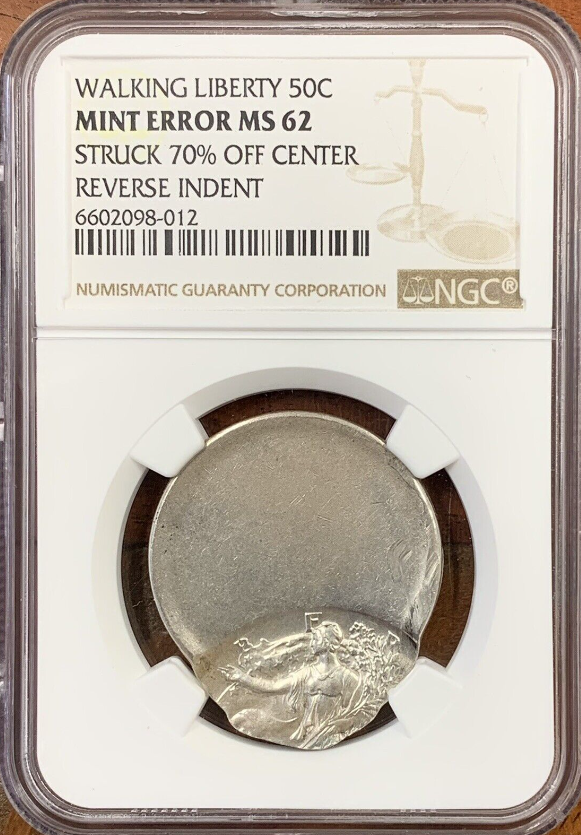
An off-center strike occurs when the die stamps down on the planchet a little off-center. This leads to some of the design being cut off from the coin. Part of the coin will also be left blank.
This error had been found on a Walking Liberty half dollar with an MS62 grading. It was struck 70% off-center. The design had been pushed down to the bottom of the coin, and you can only see up to Lady Liberty’s waist. Most of the coin is completely blank. This coin is being sold for $23,000.
1920 Half Dollar Clipped Planchet Errors
Most coins are perfectly round. But sometimes, the machine used to cut the sheet metal into planchets won’t be positioned correctly, leading to a coin that has a clipped edge. This usually manifests in crescent-shaped or straight-edge “bites” on the edge of the coin.
A clipped planchet error has been found on a Walking Liberty half dollar minted in 1935, so it would come as no surprise if it shows up on a 1920 half dollar someday too. This coin is currently selling for $750.
Also read: 11 Most Valuable Half Dollars In Circulation
Where to Sell Your 1920 Half Dollar ?
Now that you know the value of your coins, do you know where to sell those coins online easily? Don’t worry, I’ve compiled a list of these sites, including their introduction, pros, and cons.
Check out now: Best Places To Sell Coins Online (Pros & Cons)
1920 Half Dollar FAQs
What is a 1920 half dollar made of?
The 1920 Walking Liberty half dollars are made of 90% silver and 10% copper. Because these coins are tied to the melt value of their silver content, they are always valuable, even in the poorest circulated conditions.
How much is a 1920 half dollar coin worth?
In circulated conditions, 1920 half dollars can be worth anywhere between $15 and $900. Coins in mint, uncirculated conditions can go upwards of $550 and can reach an immensely high amount of around $40,000 if they’re a fine gem minted in Denver or San Francisco.
What year half dollars are worth money?
Some of the most expensive and sought-after Walking Liberty halves include those that were minted in the years 1916, 1919, and 1921. That said, 1920 dollars are still worth a lot of money. In the right grades and with rare mint marks, these coins are worth tens of thousands of dollars.
What is the oldest half dollar?
The oldest half dollar was known as the Flowing Hair half dollar, which was first minted in 1794. That year, only 5,300 pieces were minted for the new series. Today, this coin is so rare that it is worth thousands of dollars even in the worst conditions.

